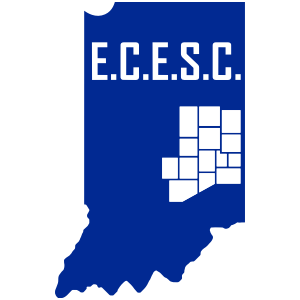
Document Library:
Contact Lindsey Lovern for more information: llovern@eastcentralesc.com
ECESC Teacher Share
Expanding Opportunities. Supporting Educators. Strengthening Schools.
In response to ongoing staffing challenges—especially in small and rural districts—ECESC’s Teacher Share initiative provides a regional solution by facilitating cross-district course sharing. Rather than acting as a content provider, ECESC serves as a connector, coordinating live learning opportunities taught by licensed Indiana educators across the region.
How It Works
Through Teacher Share, ECESC helps participating schools access a shared course catalog of classes offered live online by teachers from other districts. Districts are free to use the course catalog to develop their own Teacher Sharing partnerships, referring to the Teacher Share Playbook in the document library for resources and guidance. ECESC will assist as needed with facilitating communications, student registrations, or district agreements.
Why It Matters
This model allows schools to:
Retain talented teachers through professional growth and added opportunities to teach high level, unique, or dual credit courses.
Increase equity and access by offering students courses they wouldn’t otherwise receive
Collaborate regionally to solve shared challenges and improve student outcomes
Ready to get started?
Check out the course catalogue! If you see a course that is of interest to your school, reach out to the listed point of contact to make arrangements.
If you have a course to add to the course catalogue that can be offered through Teacher Share, please contact Lindsey Lovern, llovern@eastcentralesc.com
